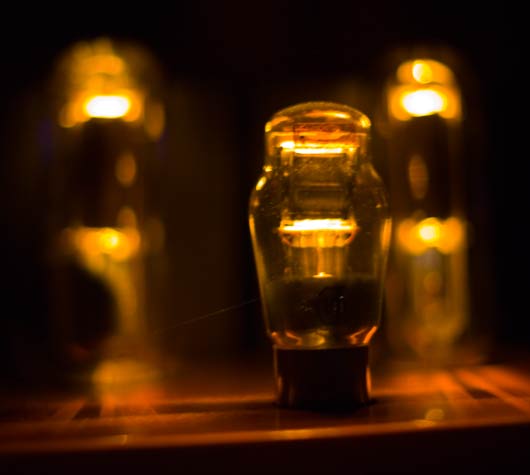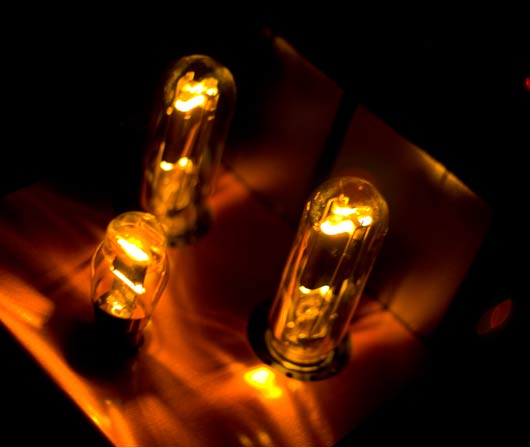I’ve wanted to put the Jinro through its paces for a loooong time, ever since the Jinro integrated amplifier came to this country at last year’s CES, where I was impressed with its sound and its low cost. Like the bigger Ongaku, combining a very high quality stereo amplifier with a very high quality preamp in one chassis saves on power cords, interconnects, and amps stands/rack space. This allows one to achieve price-performance ratios unheard of in here in our Extreme High-end part of the audiophile hobby. Essentially, it allows you to get close to the Extreme high end at ‘slumming it’ prices.
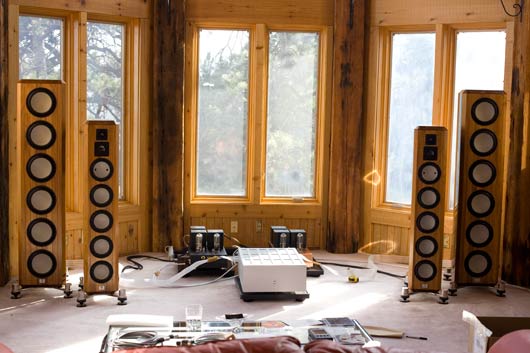
We performed a shootout between the $20K Audio Note U.K. Jinro, in black, and the $95K Audio Note U.K. Ongaku, in copper. As you can see, they are very similar externally, and are using the same brand of 211 tubes. Internally the Jinro is wired with copper and uses copper-wound transformers as opposed all silver inside the Ongaku. They both weigh about 60 pounds or so and put out about 25 watts. Kevin O., Neli and I were in attendance.
The system was the Marten Coltrane Supreme speakers, Emm Labs digital, Nordost Odin interconnects and power cords, Jorma Design Prime speaker cable and HRS platforms. We will also do another, similar shootout on the All Audio Note system downstairs with Steve G., Neli and I doing the finger pointing at that time.
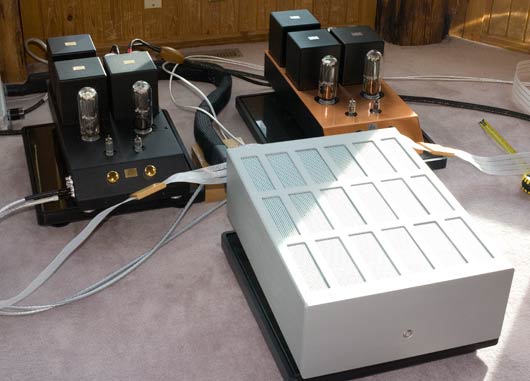
We played the Jinro first using our 3 test cuts: Gloria Esteban, Elton John and a short but complex Mozart piece.
It was great: good details, lots of good separation, dynamic, good color. The Elton was not quite as magical as we remembered it, but maybe we had exaggerated the magicality in our minds over the last few weeks. Certainly did not hear anything that didn’t sound great.
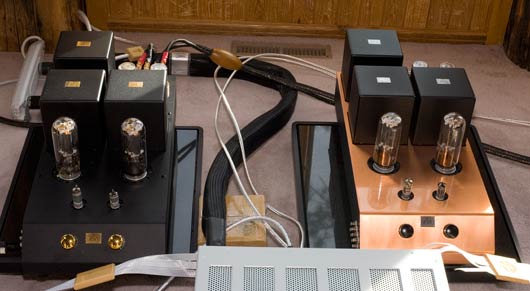
We then played the 3 cuts on the Ongaku. Kevin kept bringing up Mike Tyson, so I will put it like he did: It was like me, Mike Davis, and Mike Tyson going into the boxing ring. It wouldn’t take anybody very long to figure out who was the winner [me being the first, in that scenario :-)].
The Ongaku has a LOT more stuff happening between the notes, which allowed it to have a lot more resolution and the harmonics to be much more vivid. We went through the motions and played all 3 cuts – the Elton piece was as amazing and drug-like as we had remembered it being [more so in fact – hearing a song be ‘great’, and then soon after be ‘OMFG great’ has its own special kind of drug-like effect. More later on this].
As a shootout this was somewhat worthless – but we did learn a few valuable things nonetheless.
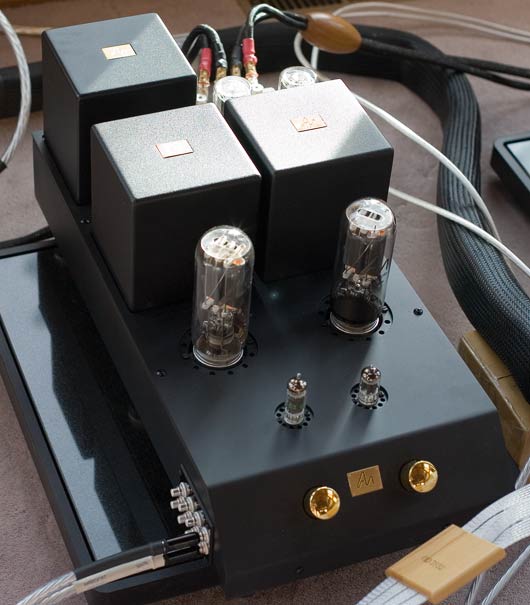
The $20K Jinro did a great job on this 1/2 million dollar system. Without hearing the Ongaku, many people would never know what they would be missing and would be very happy campers.
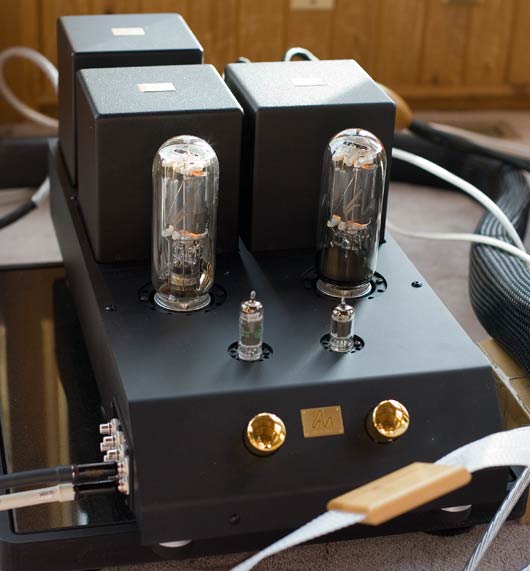
Is the Jinro as magical and drug-like as the Ongaku? No. But that is not saying much, as only very, very few other amps are.
But the system around a Jinro can be designed so that the Jinro doesn’t have to do ALL the heavy lifting [our test system is pure straight-line high resolution components and cables counting on the Ongaku do all the drug-like magic]. For such a Jinro-centric drug-like system, the Jinro will be able to supply very high-quality dynamics, separation, phenomenal note control, and harmonic purity…. and quite a lot of resolution (esp. compared to most amps).
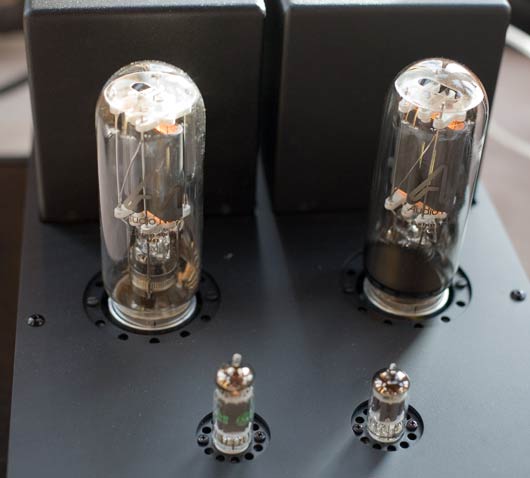
Our next step here will be to put the Jinro on a system with a Audio Note digital front end, on Audio Note speakers, and see – I mean hear – how it compares once again to the Ongaku [we really do like the Jinro, a lot(!), even though we are putting it up against impossible odds against the Ongaku in these shootouts]. This shootout will then tell us how they compare on a very musical front end.
After that we will proceed to try and build, hopefully several, reasonably-priced drug-like Jinro-centric systems from the components we have lying around here.

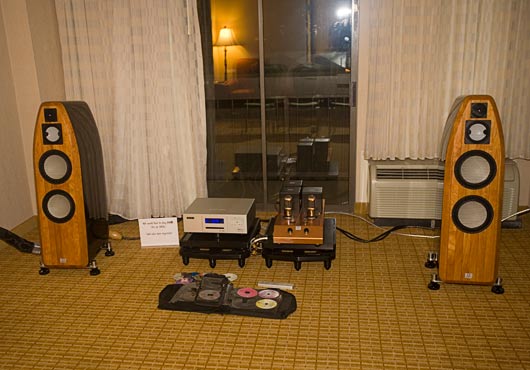
 to turn the volume up to 5.5 on Bela Fleck (track 4 on the CD) and the bass on that track was pretty darn impressive [not sure how else to describe it] at that volume. Let’s just say that the Ongaku drove those [89dB] speakers to very high SPL, controlling each note perfectly from birth to death, without straining.
to turn the volume up to 5.5 on Bela Fleck (track 4 on the CD) and the bass on that track was pretty darn impressive [not sure how else to describe it] at that volume. Let’s just say that the Ongaku drove those [89dB] speakers to very high SPL, controlling each note perfectly from birth to death, without straining.